Do you teach music for special education classes? Have you ever been stumped on how to make your self-contained special ed music class fun, engaging and successful for your students?
If so, you are in good company. It can be challenging finding what works for your special education music classes.
In this blog post I will share with you some of the things that I have learned through trial and error in my own classroom, and hopefully save you some of the challenges I had when starting to plan music lessons for special needs students.
Benefits of Music for Special Needs Students
There are so many benefits to exposing your special needs students to music. Here are just a few of the many ways that music benefits all students, especially students with special needs.
Social Benefits of Music
Music class can be a good way to teach social skills to students. Having a hello song and teaching students about responding to a hello greeting is a social skill they can learn.
Taking turns with an instrument is another one. Many of these students may have social goals on their IEP that you can work towards in your songs and activities.
Emotional Benefits of Music
Some special needs students may have difficulty expressing their emotions. They may also have difficulty processing emotional cues in others, such as body language and facial expressions.
You could use a song like If You’re Happy and You Know It, and in between repetitions of the song, have pictures of people with different emotions and have students identify what emotion they see.
Also, students get the emotional benefits of joy, camaraderie, and all the other wonderful emotions you can experience through music!
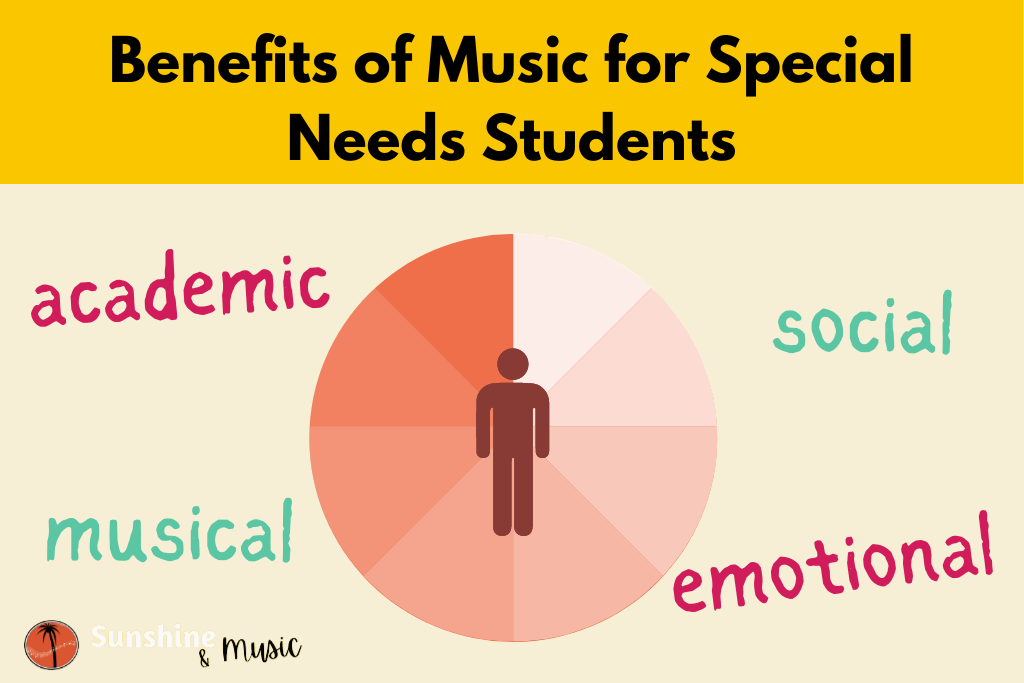
Educational Benefits of Music
Songs can be a great way to practice foundational skills such as identifying colors, counting to ten, identifying letters, words or numbers, just to name a few. Again, there might be specific IEP goals students are working towards that you can incorporate into some of your songs.
For example, I did a winter song and then had students count the snowflakes. For more advanced students, I would have two sets of snowflakes. They have to point to the set with 3 snowflakes or the set with 5 snowflakes.
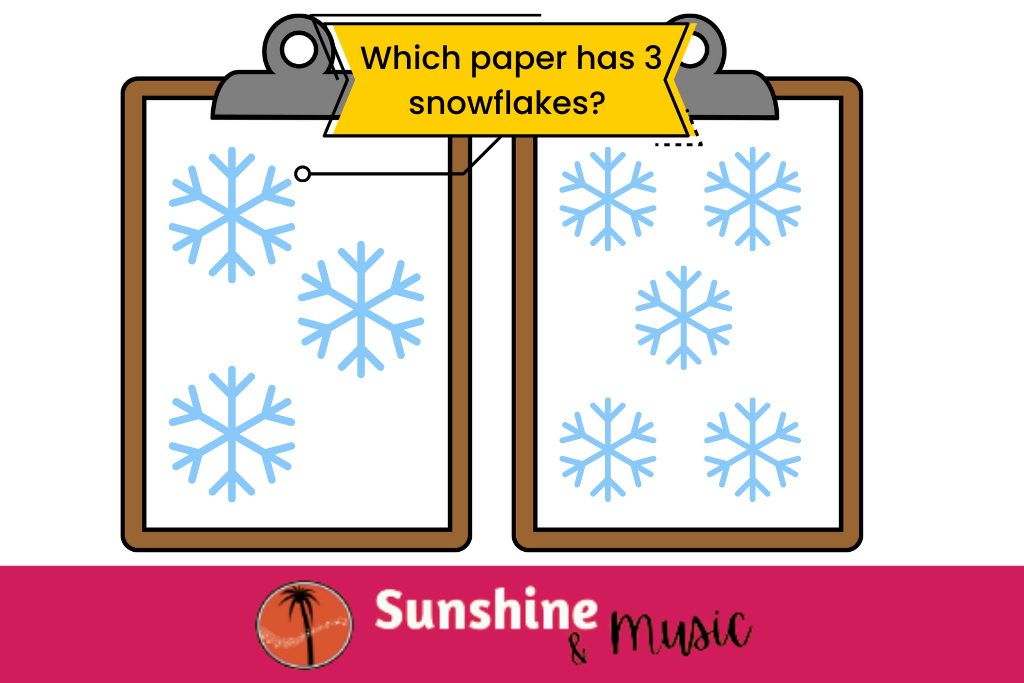
Musical Benefits of Music
And of course we can’t forget the musical benefits of music for special education. Learning about concepts such as steady beat, singing, correct use of instruments and all the other musical concepts that you can explore in your class.
Remember that for many students, the eventual goal is to mainstream them. So the more you can prepare them to join a mainstream classroom with some basic musical knowledge, the better.
Accommodations will most certainly have to be made even after mainstreaming, but it would help them tremendously to have some basic knowledge to work from.
Planning Music Lesson for Special Needs Students
Set Some Basics Music Goals for Your Special Ed Students
I have two different levels that I see – PreK and K-5. While there is a wide range of students in the K-5 class, there are more students on the older side (2nd grade and up).
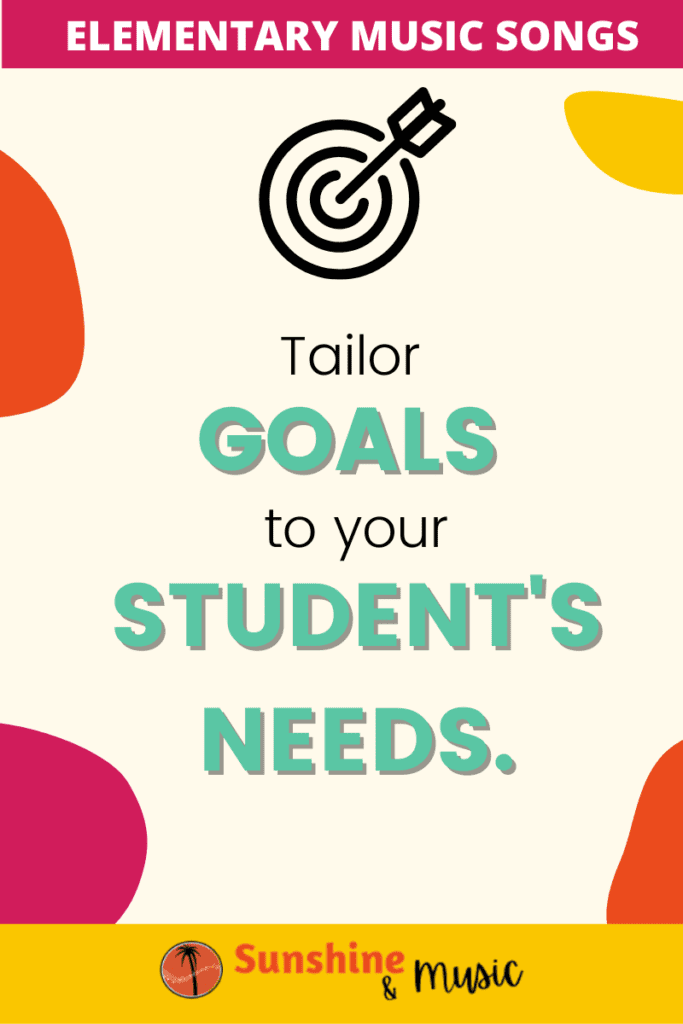
For my PreK class, my goals are mostly to get them to respond to music through some sort of movement and to explore the correct use of an instrument such as rhythm sticks or a drum. Do not expect that all students will respond right away. Expect a lot of blank stares the first time. Students need MANY repetitions of the same song before they might join in and move along with it.
With my older grades, we started with the steady beat. We also had goals such as sorting percussion into metal and wood groups and describing how a song makes them feel. Many students are non-verbal, so I have not done any singing goals, but each group of students is different. Tailor your goals to their needs.
Tips on How to Teach Music to Special Needs Students
Routine
Students thrive on routines, especially in special education. Have a standard routine every time students come to your room. Mine consists of sitting, reviewing correct music class behaviors, looking at our visual picture schedule, singing a hello song, doing some songs and activities and then our goodbye song.
Repetition
I cannot stress this one enough. Repetition is KEY for special ed students. With my PreK class, I will be slowing this down considerably next year to the point of creating a new lesson for them each quarter.
That’s right. They will repeat basically the same lesson for 9 weeks in a row. And love it. I will add an extra level of familiarity with them during the beginning of the year by using mostly songs they already know (Wheels on the Bus, Baby Shark, etc), that will help take away from the unfamiliarness of a new space (the music room).
My older class doesn’t need to repeat quite that much, but we will probably do the same songs for at least a month at a time.
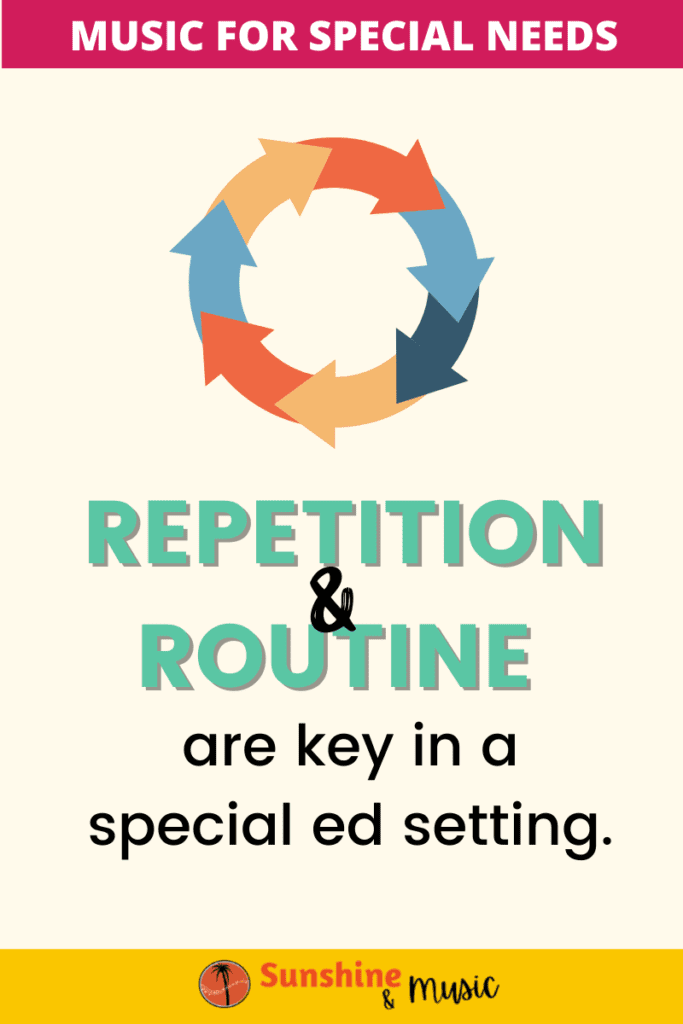
Picture Schedule
When teaching music for special education classes, have a visual schedule of what you are doing for the day. Students thrive on routine, and knowing their schedule helps them know the purpose of the lesson and what is happening next. Otherwise, anxiety over the unknown can spiral your class right out of control.
Students who do not know the game plan for the class period often act out with a variety of behaviors, so give them what they need (a picture schedule), and you’ll already have upped the success factor in your class.
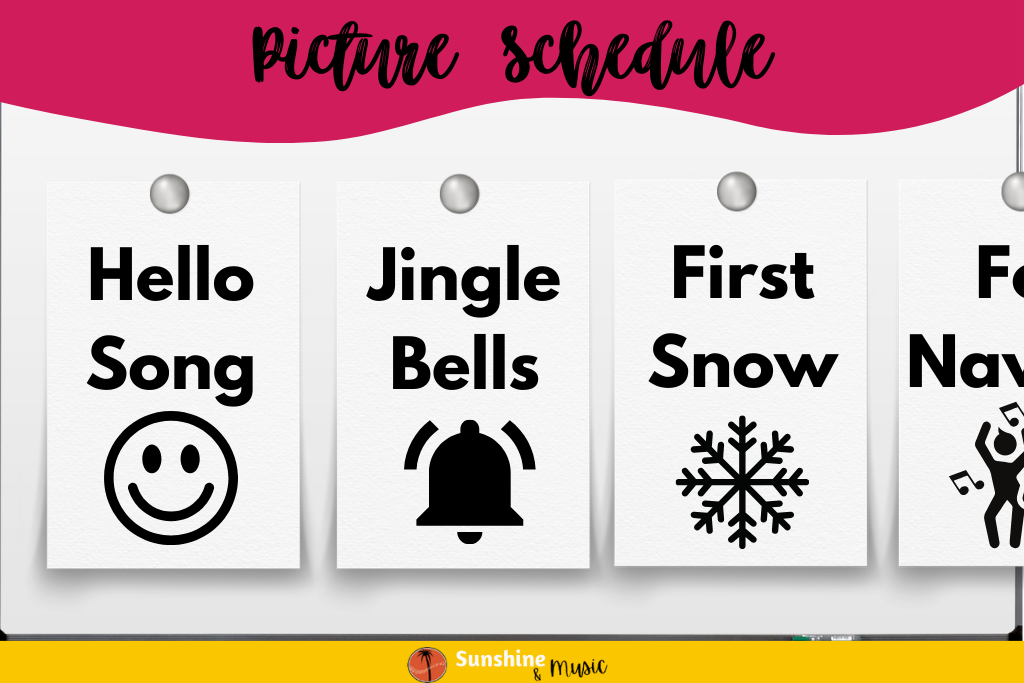
A great place to learn more about picture schedules in at Autism Little Learners. Tara has a wealth of information about ways to use visual supports in your classroom. You can even check out this 7-Day Visual Supports Challenge.
Visuals
Visuals are incredibly useful in teaching music for special education. With my PreK class, I have learned to give the verbal direction once, then just use the visual until they comply or I show them what I am trying to communicate, hand over hand.
See if you can give one word directions. Clap. Sit. Play. I had no concept of how many extra words I was using until I first encountered my PreK class. The assistants in that class coached me and it took a while but our class was rocking by the end of the year.
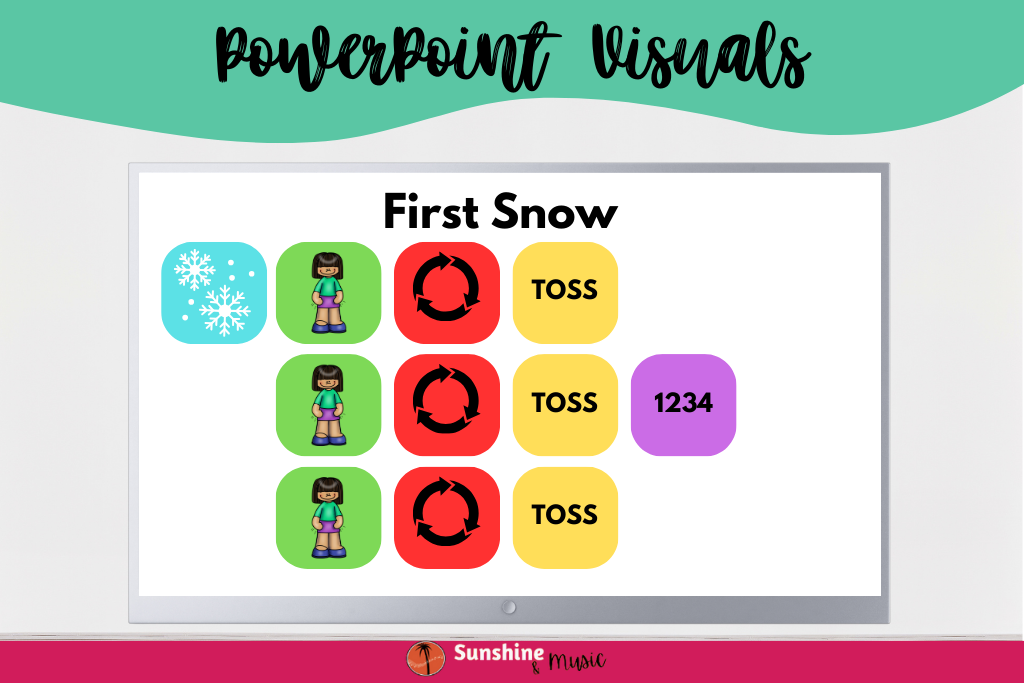
I use visuals to show what I want them to do in each activity (clap, play an instrument, listen, etc) and to help them pick choices (ex: what animal should we sing about on Old MacDonald’s farm?).
I use a visual of students sitting when they come in the door. I have visuals of our rules (I use the same ones that they use in their classroom at circle time). If there is something you want them to understand, be prepared to have a visual handy.
Puppets and Play Toys
Music can be a bit abstract for many students. Having something concrete can help them perceive and respond to music. For example, marching toy dinosaurs to We Are the Dinosaurs by The Laurie Bernker Band was a wild success with my PreK class.
Instruments
Isn’t it universally true that every song is better with an instrument to play along? Special ed students love instruments just as much as all your other students. So of course we use them in practically every lesson.
I usually have an instrument of the month (or quarter for my PreK). We discuss the correct way to use it (not in the mouth, gentle, etc). Then we pass it out and play with the song.
Sensory Activities
One thing that is a huge hit with special ed students is sensory experiences. Things like sitting under a big parachute as the adults lift it up and down over their heads, having a giant scarf brushing up and down over their face as you lift it up and down, bubble activities and more.
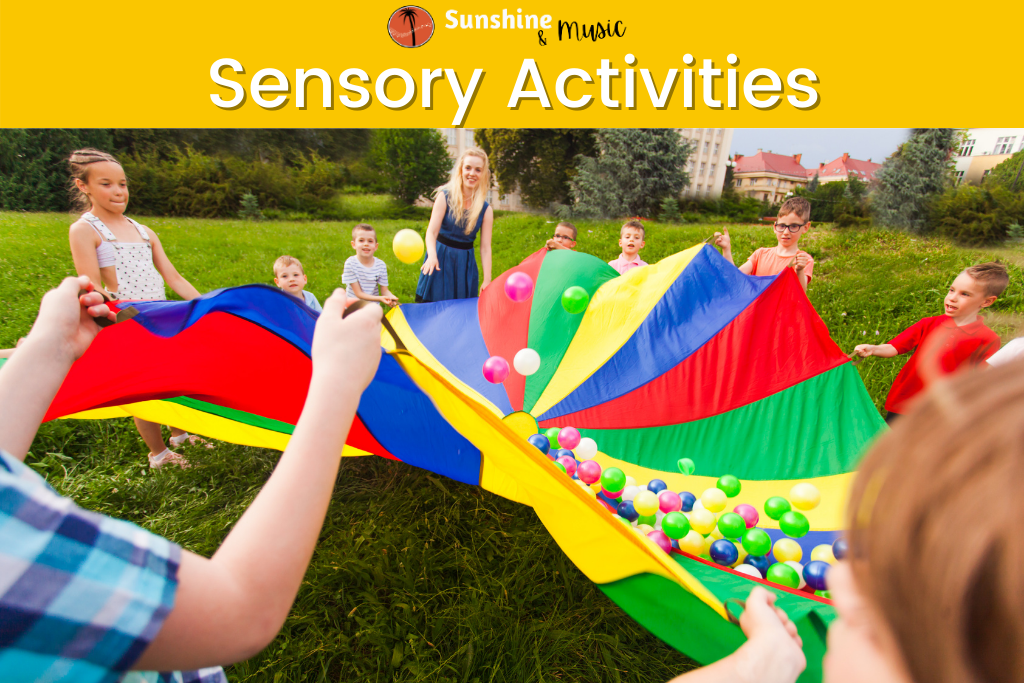
Hand Over Hand
Sometimes when you are teaching students skills such as steady beat or even making a choice of two pictures on a piece of paper, you may have to physically guide their hand. This is called “hand over hand” and is a form of scaffolding to help them learn new skills.
This can be a very helpful tool, but always keep in mind the temperament of the child as well. Some students are ok with hand over hand. Some students are resistant to touch. The student’s aide should be able to help you gauge what is best for each individual child.
Limited Choices
An overabundance of choices can be very overwhelming to special needs students. When possible, give students just two choices.
For example, when teaching about types of percussion, we didn’t sort woods, membranes, shakers and metal all at the same time. We just sorted metal or wood. So for each instrument I could just ask metal or wood?
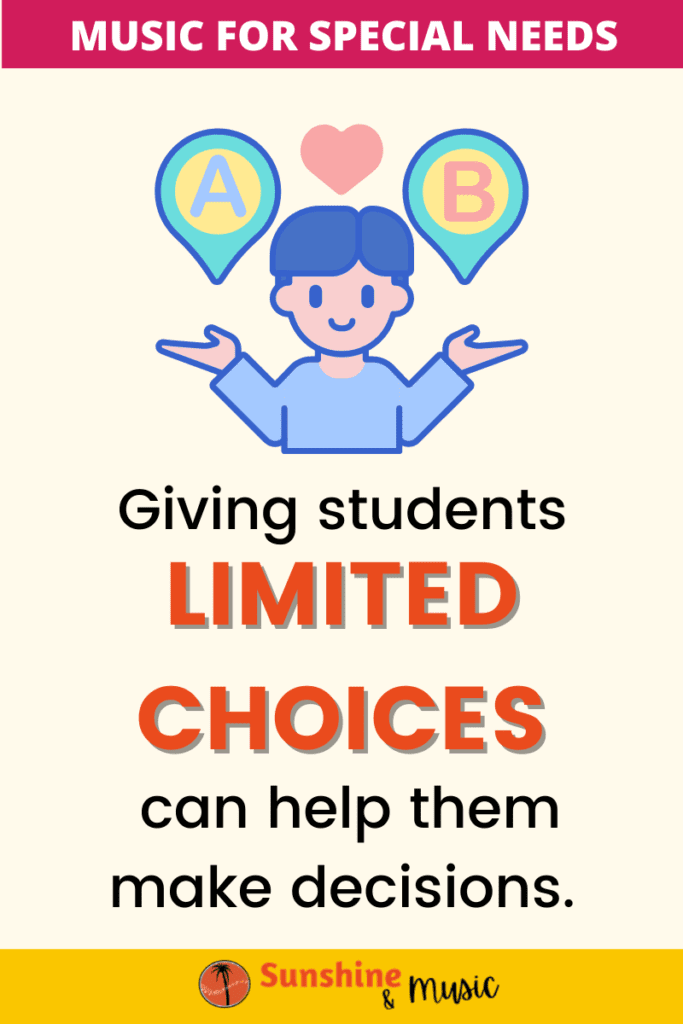
Non-verbal options
Remember, many of your students may be non-verbal or have limited verbal abilities. If you can find the right way to ask a question, you might be surprised how much they know.
The first time I to tried to teach about types of percussion, I thought the kids were not grasping it at all. I would show an instrument we had just talked about and ask them – is this a metal? Well, no matter what instrument is was, they would just say “yes” to everything.
Then I had a different idea. I gave them the instrument in their hands. Then I grabbed two buckets. I asked “metal or wood” indicating one bucket for metal and the other for wood. They had about 95% accuracy after that.
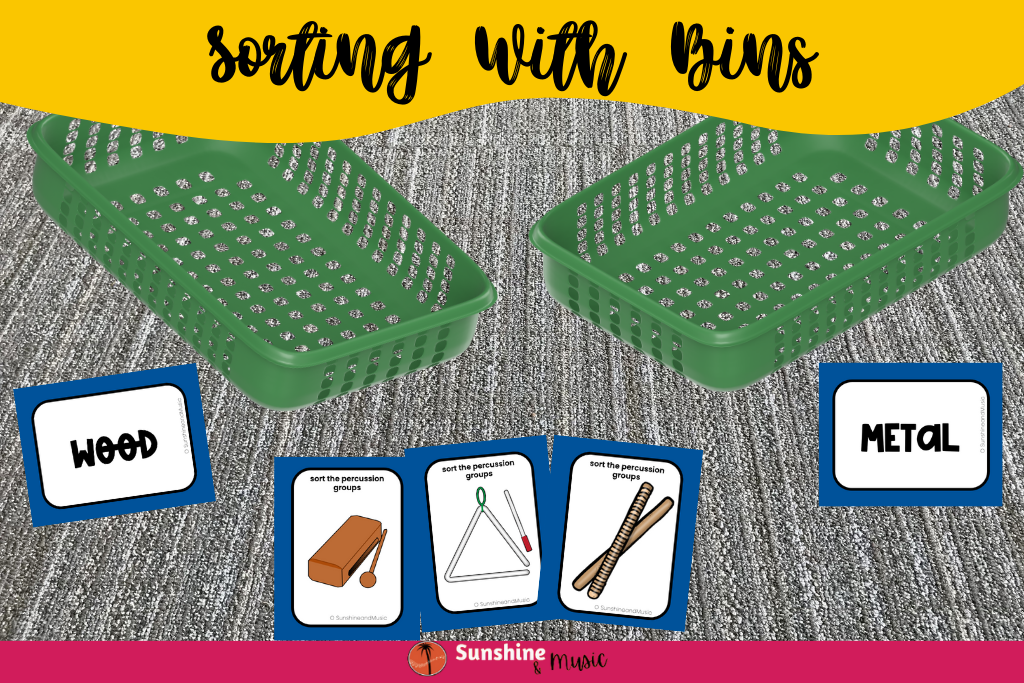
Another non-verbal tool is a choice chart. It has picture of, for example, different movements we could do to a song (tap, jump, clap, etc). Students can point to their choice.
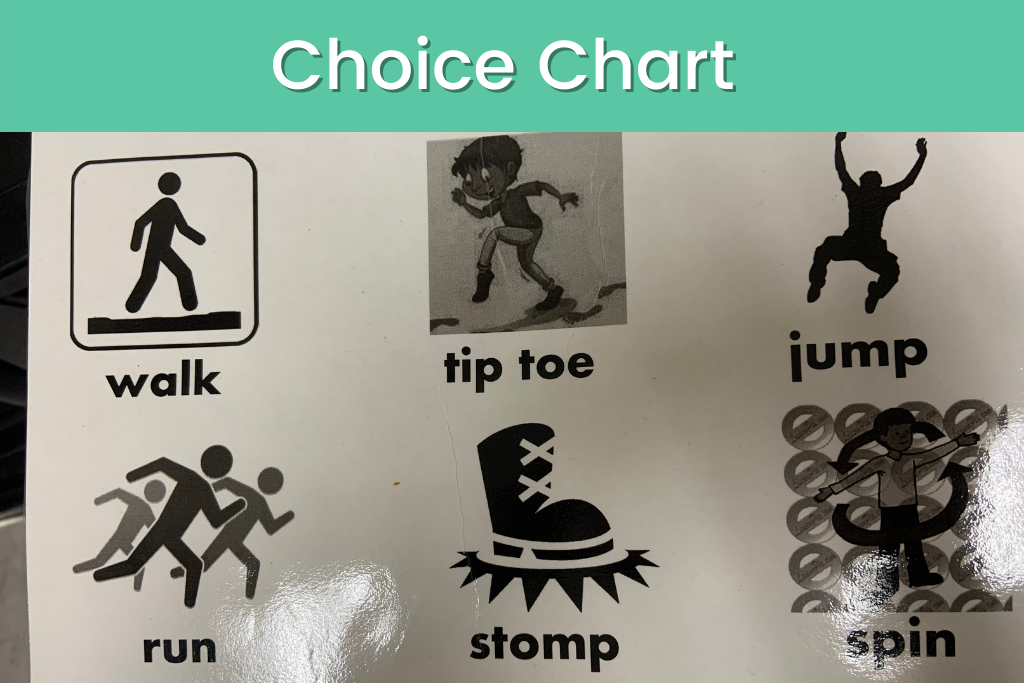
Finally, here is another example of a non-verbal tool I used in teaching music for special education. I saw a music and emotions worksheets on @buchananmusicprogram on Instagram and thought – this would be perfect for my special ed students!
Students pick a color and emotion to go with a song. We listened to different kids of music and students worked with an aide to decide on a picture to paste and a color to go with each song.
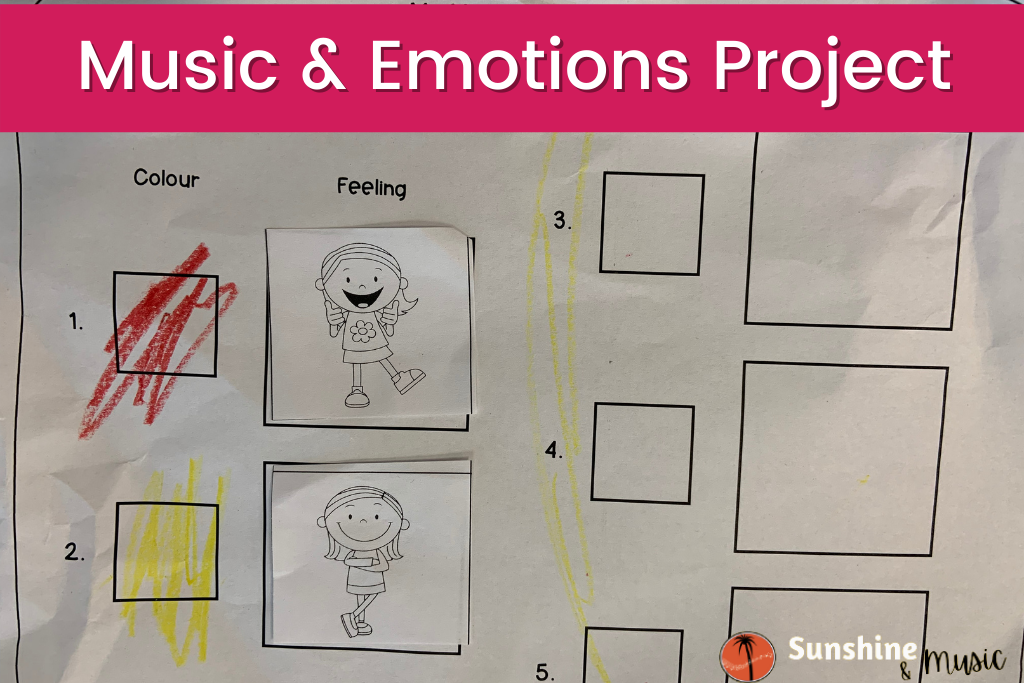
A List of Music for Special Education Classes
Looking for some helpful songs and resources for teaching your special ed music classes? Here is a short list of some of the songs my students loved.
YouTube Channels
The Singing Walrus – great songs for older students. The songs are simple, but the music is less baby-ish.
Super Simple Songs – excellent for PreK classes
CocoMelon – there is something magical and mystical about CocoMelon songs. Students are always pulled into the videos.
Songs for Younger Grades
We Are the Dinosaurs – Laurie Berkner Band
The Goldfish Song – Laurie Berkner Band
Wheels on the Bus
Old MacDonald
The Itsy Bitsy Spider
The Rainbow Song
Logo Te Pate (from Moana)
Colombia, Mi Encanto (from Encanto)
Songs for Older Grades
Rock and Roll version of Jingle Bells
First Snow by TSO – click to view the motions I created on YouTube!
Mary At the Kitchen Door (blues-style folk song)
Colombia, Mi Encanto (from Encanto)
Looking For More Ideas For Music Class?
Here are some other blog posts you might enjoy.

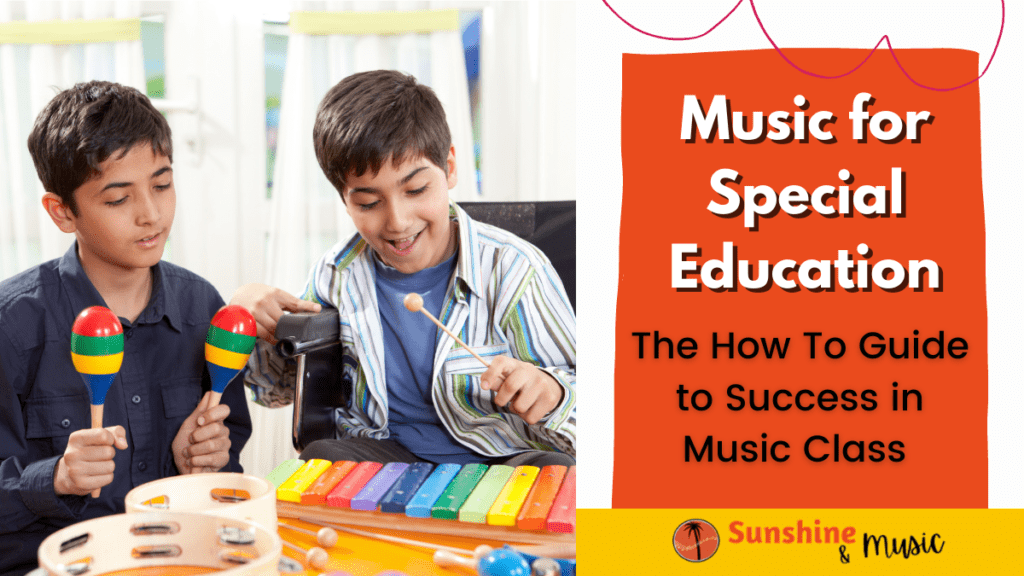

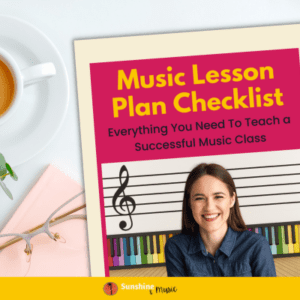

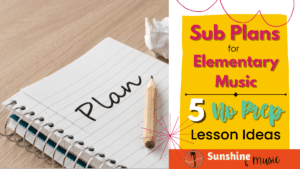
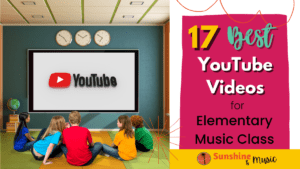
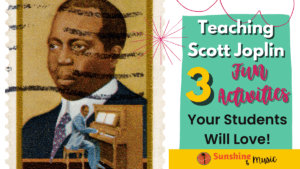
10 Responses
I have a nonverbal autistic son. His language is music and art. I have a few suggestions that helped a great deal.
1. Music for nonverbal autistic kids needs to be in a room that doesn’t have anything else. It needs to be extremely clear what they are there for, otherwise they will get distracted very easily.
2. When giving instruction, do not use verbal communication. Either physically show them or have a video that shows them, make sure there are NO verbal instructions.
3. Music production software is a great tool for teaching music especially piano because the kids can actually see the notes and can visually see how long they are supposed to hold the note. And it introduces them to recording and making songs from scratch.
I have done this with my son and he pretty much teaches himself. We do this everyday and he is now copying music completely by ear. He can pick out the key to any song within a few seconds. He also ended up being an incredible tap dancer.
Another very positive thing that happened is he learned to read. Everytime I would play a song on YouTube, he would remember the title of the video. He then could search for songs he likes, He now knows the names of thousands of songs.
We used the same technique for learning drawing. We just show him a drawing tutorial and he copies what they do.
He plays the glockenspiel, keyboard, drums, congas, bongos and tap dances. He also makes his own hip hop beats. He is currently 13 years old.
I removed him from special education because it was a disaster for him and for many kids because the classrooms are set up for failure. I don’t think most people involved in special education understand just how easily distracted these kids can be.
I hope these suggestions help you.
Thank you for all the great tips! They definitely resonate with me. It has been a major challenge for me to remember to limit (or eliminate) verbal directions, but honestly, now that I am more aware of it, it has helped save my voice and make my directions less verbal in my other classes as well! And thank you so much for mentioning technology. I will have to go in and add a section on that as it is such a useful tool. Great tips all around.
Using both verbal and visual language together, keeping verbal instructions short, integrating kinesthetic practice, and leaving extra time for students to respond verbal cues to should work well.
Thanks Jess! Awesome suggestions!
AWESOME INFO! THANKS FOR SHARING!!!
Thanks! ❤️ I hope that you and your students find it helpful! Reach out and let me know what things worked well in your class. I would love to hear. 😃
How and where do I purchase these wonderful tools for teaching Special Education students? Please, share this pertinent information and I will definitely become a subscriber!
Sincerely,
Ruthie Savon
Musicma68@outlook.com
Hello there Ruthie! Thanks for reading. The tools I use for teaching Special Education classes come from many places. I usually just make the visual schedules using icons in PowerPoint. I tried to provide links within the article to the YouTube channels and and other sources I used. Let me know know if there is a specific resource you’d like to know about and I can send you in the right direction. The only one that I have available as a product is the sorting cards shown in the post. I have included a link to them here: Instrument Sorting Cards
I am looking for advice. The music teacher in my high school has never taught a high school life skills group. The material she uses is based upon elementary level . What resources are available for providing high school students music education?
A non elementary morning song would be nice
This is a great question. I have only ever taught the elementary level so I cannot speak from experience. But off the top of my head, I might use something like the Mooseclumps YouTube channel. It takes pop songs and changes the words to make them about different concepts. Or even looking for some straight up pop songs to teach social-emotional skills (songs like Happy by Pharrell, or Beautiful Day by U2, etc). Then for the other parts of class I might see what kind of adaptive music making they could do using iPad instrumental apps, etc. I hope some of this is helpful! Thanks for the question.